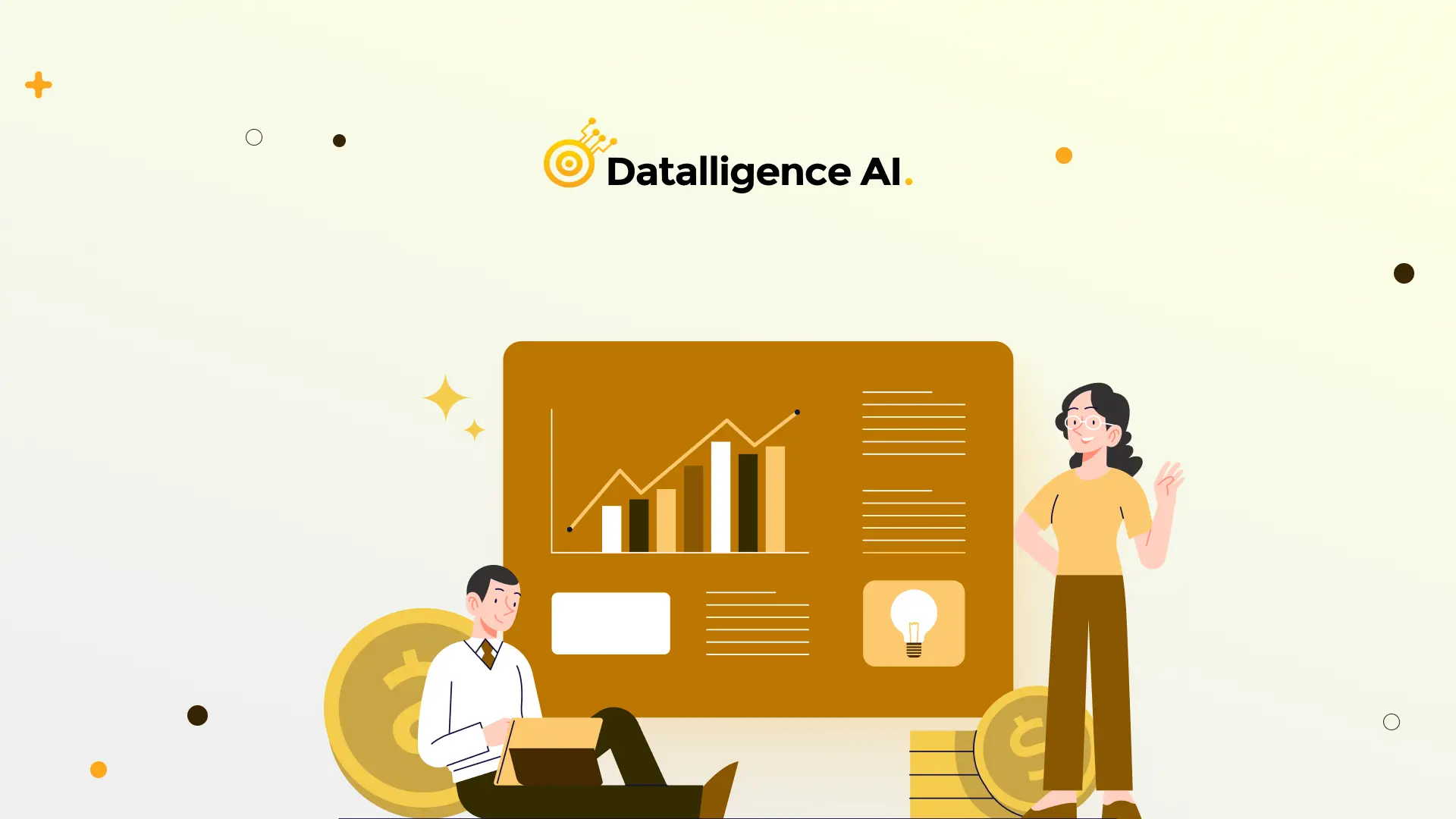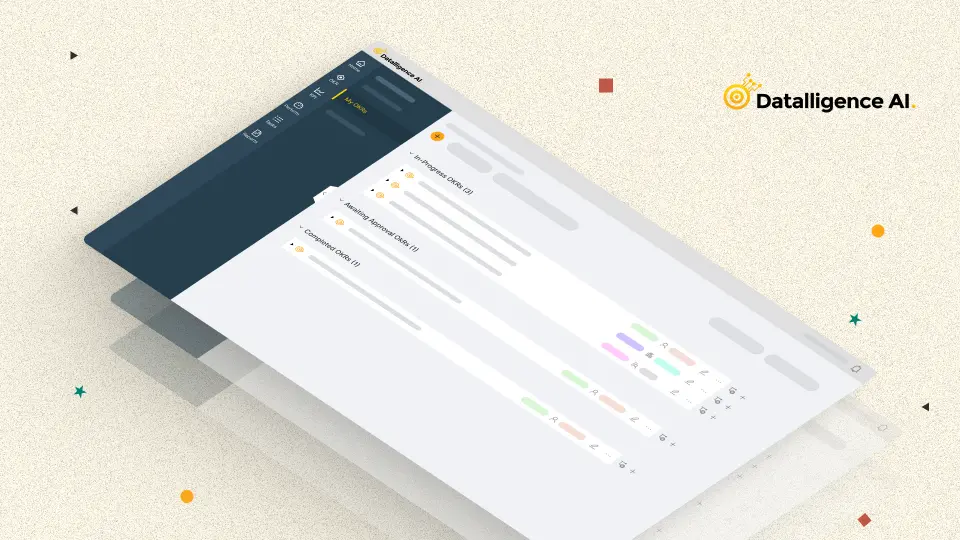The financial services industry is faced with a myriad of challenges that require innovative solutions in today’s dynamic business environment. Within this context, digital transformation and data analytics cost optimization, and cybersecurity are some of the areas that matter in the banking sector. It is within this intricate milieu that effective performance management has come out as a defining factor for success. The use of proper financial performance management software enables businesses to streamline operations, improve employee engagement and eventually facilitate growth.
The Financial Services Landscape: An Overview
The financial services sector encompasses a diverse range of businesses and organizations that provide financial products and services to consumers and enterprises alike. From personal and commercial banking to investment firms, lenders, accountancy practices, brokerage houses, advisors, and insurance companies, this industry plays a pivotal role in the global economy. While the sector comprises large conglomerates, it also encompasses a multitude of smaller companies and partnerships, each contributing to the intricate tapestry of financial services.
Navigating the Challenges: A Multidimensional Approach
As highlighted in a recent PwC report, the financial services sector grapples with several key challenges that demand a comprehensive and forward-thinking approach:
1. Digital Transformation: Meeting Customer Expectations
In an era where customers expect seamless digital experiences, financial firms must undergo a back-office operational transformation. This necessitates the integration of cutting-edge technologies and adopting agile processes to deliver exceptional customer service across all touchpoints.
2. Data Analytics: Unlocking Insights for Competitive Advantage
In the financial services industry, it is now more than ever before a given fact that effective data analysis is a must-have for any firm seeking success as it helps them to know what their customers want. This makes it easy to identify emerging opportunities and gain competitive edge in a market that keeps changing its face.
3. Artificial Intelligence (AI) and Intelligent Process Automation (IPA)
From being luxury, AI and IPA have become necessities in the banking industry. Businesses can make use of these tools for problem-solving, enhanced operational performance and innovation approaches to remain competitive.
4. Blockchain: Exploring New Frontiers
Institutional investors are examining blockchain technology to give them an edge in their operations as well as regulators. This way technology offers many benefits including a better security, transparency, and efficiency in many financial activities.
5. Cost Visibility and Control
For financial institutions, managing costs strategically is imperative due to the importance of cost containment in this sector. To achieve optimal resource allocation and long-term sustainability, this entails investing in core competencies while at the same time identifying and mitigating wasteful expenditure.
6. People Strategy: Fostering Diversity, Trust, and Digital Readiness
As the workforce landscape evolves, financial services firms must adapt their people strategies to embrace diversity, build trust, and cultivate digital literacy. By prioritizing these aspects, organizations can attract and retain top talent, fostering an environment conducive to innovation and growth.
7. Cybersecurity: Safeguarding Digital Transformation
With the increasing digitization of financial services, cybersecurity has become a critical concern. Financial firms must develop and maintain robust cybersecurity capabilities to protect sensitive data, maintain customer trust, and mitigate the risks associated with digital transformation.
8. RegTech: Enhancing Efficiency and Reducing Regulatory Costs
Regulatory Technology (RegTech) is revolutionizing the financial services industry by introducing greater efficiency, reducing risk, and minimizing regulatory costs. By embracing RegTech solutions, institutions can streamline compliance processes and stay ahead of evolving regulatory landscapes.
According to PwC, three areas will receive particular focus in the financial services sector: cost limitation based on a clear understanding of an institution’s core mission, the deployment of AI and software bots to streamline operations and generate game-changing insights, and strategic deal-making, mergers, and acquisitions to acquire new capabilities, consolidate market positions, or divest non-core activities.
The Pivotal Role of Performance Management Applications
In this dynamic landscape, performance management tools emerge as invaluable tools for financial services organizations, enabling them to streamline their employee performance management processes. By leveraging these applications, institutions can unlock a host of benefits, including:
1. Cloud-Based Accessibility
With the unprecedented shift towards permanent or hybrid remote working models in the wake of the COVID-19 pandemic, cloud-based performance management applications have become indispensable. These solutions allow banking teams, regardless of their physical location, to access real-time appraisals and conduct 360-degree evaluations using technical and behavioral competencies from any internet-connected device.
2. Goal Setting for Teams and Individuals
The customer service of the tellers of mortgages and bank tellers has been changed to be focused on other things like revenue collections. To manage and direct the performance of these results-oriented frontline employees, performance management applications are ideal. These tools facilitate quick goal assignment via a repository containing a wide variety of Key Performance Indicators (KPI) for individuals, teams or specific job categories. After being assigned, this system can be set up in such a way that it reminds evaluators to assess workers within daily, weekly, monthly quarterly or annual cycles so as to facilitate real-time appraisal in order to ensure that mission-critical sales activities.
3. Robust Data Security
In relation to financial services companies, cyber security has recently become an imperative due to digitized sensitive financial and personal data along with tightening data protection rules. When there is extensive attack on a bank’s information it will ultimately make customers leave from the company. With this kind of encryption algorithms that use 256 bits, any processed data using performance management applications would never be compromised hence protecting sensitive information every time there is an attack on a computer system by hackers.
4. Customer Feedback Integration
Customer satisfaction is the cornerstone of success for any financial organization. Performance management applications often incorporate customer feedback capabilities for bank tellers, mortgage officers, loan officers, and other front-line staff. The data reports generated by these applications provide valuable insights into areas where service levels can be improved, identifying training requirements for the workforce to enhance the overall customer experience.
Choosing the Right Performance Management Application
With a myriad of performance management applications available in the market, selecting the right solution can be a daunting task. However, by focusing on key features and capabilities, finance and insurance organizations can ensure they invest in a platform that aligns with their unique needs and objectives.
1. Goal-Setting Tools
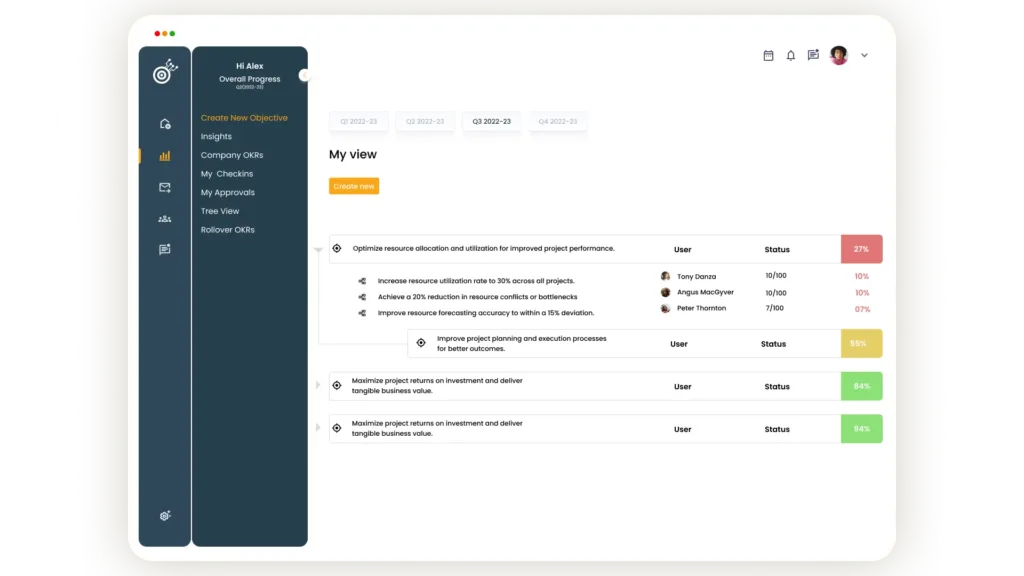
Effective goal-setting is the foundation of successful performance management. Look for applications that offer robust goal-setting tools, enabling organizations to clearly define and communicate business objectives across all levels – from individual employees to teams and departments. Real-time progress tracking and accountability features ensure that goals are accomplished and deadlines are met.
2. One-on-One Meeting Templates
Regular one-on-one meetings between managers and employees are crucial for fostering open communication, providing feedback, and addressing challenges. Seek out performance management applications that offer streamlined one-on-one templates, ensuring that these interactions cover all relevant topics and create a culture of trust, connection, and care.
3. Feedback Mechanisms

Effective feedback is a two-way street, and performance management applications should facilitate feedback exchange between employees and managers. Look for platforms that offer user-friendly feedback mechanisms, enabling both parties to provide constructive feedback for growth and development, further strengthening the foundation of trust and continuous improvement.
4. Engagement Surveys

Gauging employee perceptions and sentiments is essential for assessing the effectiveness of performance management practices and identifying areas for improvement. Applications that offer engagement, pulse, and lifecycle surveys can provide valuable insights into the employee experience, enabling organizations to make data-driven decisions and foster a more engaged workforce.
5. Real-Time Analytics and Reporting

In the data-driven world of finance, performance management applications should offer robust analytics and reporting capabilities. Real-time insights into employee performance, team dynamics, and organizational trends can empower leaders to identify opportunities and threats, navigate talent challenges, and make strategic decisions that drive business success.
6. Performance Dashboards
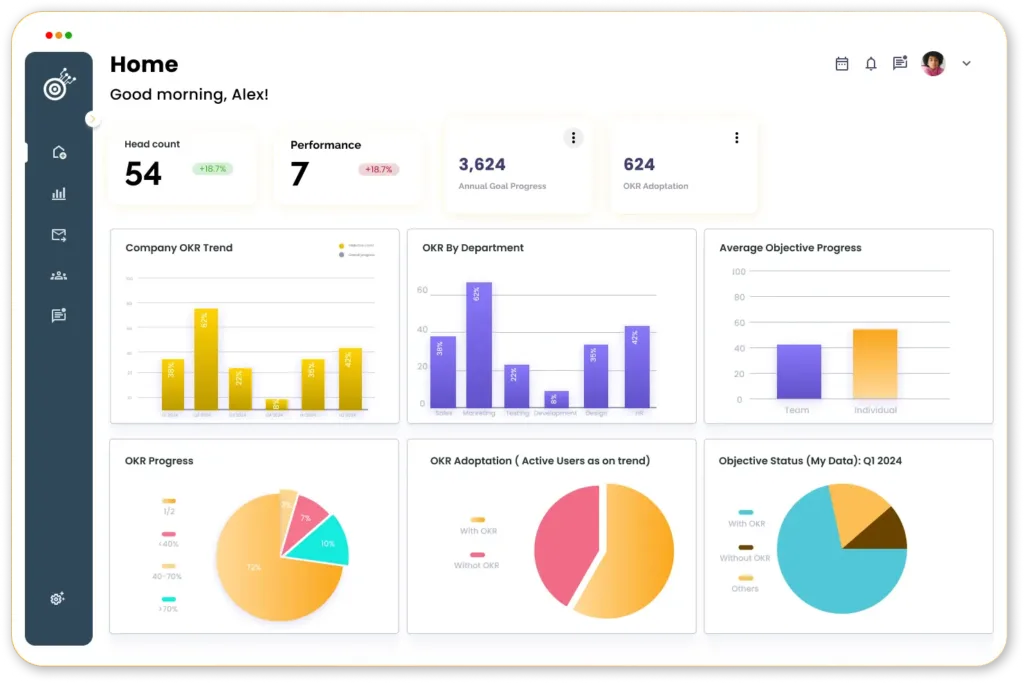
The financial service providers are supposed to adjust their people strategies to accommodate diversity, establish trust, and promote digital fluency as the labor landscape evolves. By focusing on these areas, employers can hire and keep outstanding personnel thus creating a conducive climate for innovation and expansion.
7. Competency Assessments
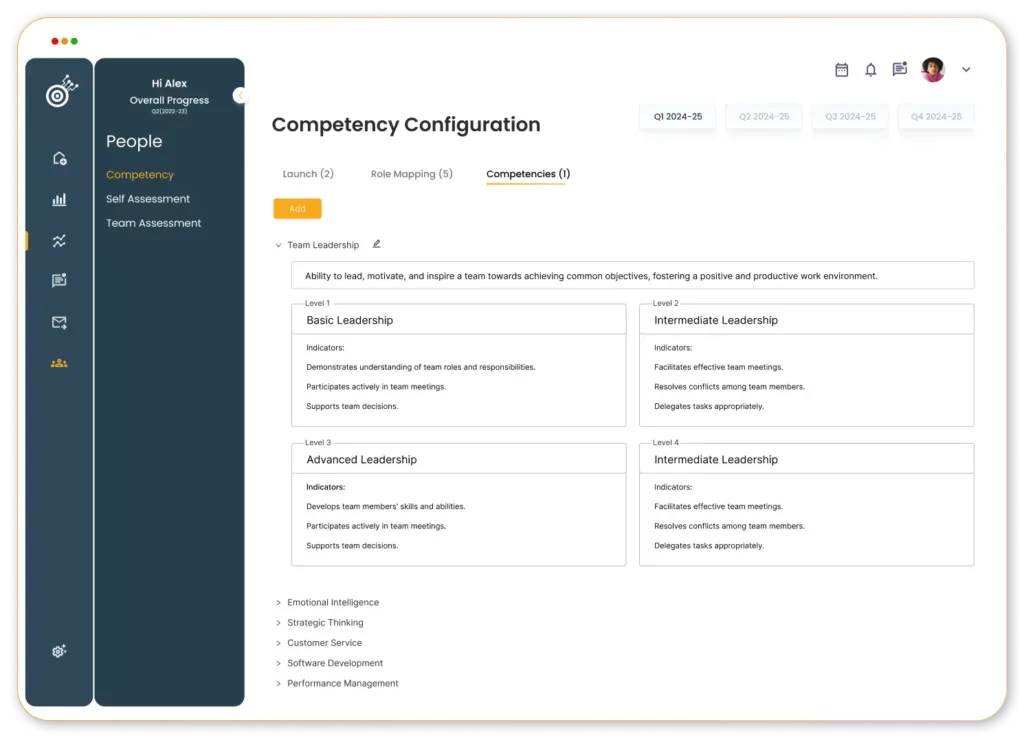
Security is an essential issue in the present era of technological revolution within financial services. Financial companies should have robust cybersecurity capabilities that guard against hacking into sensitive data, instill customer confidence, and prevent any risks associated with digital changeovers.
8. Continuous Performance Tracking
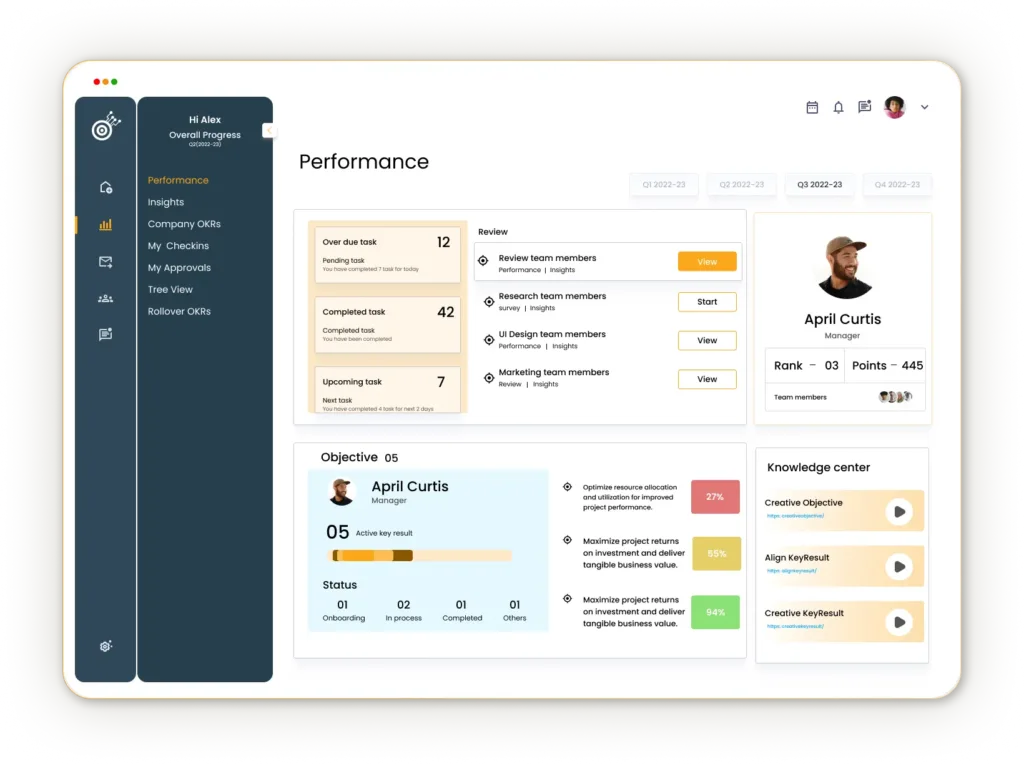
In today’s fast-paced business environment, annual performance reviews are no longer sufficient. Seek out applications that enable continuous performance tracking, allowing managers and employees to monitor progress, adjust goals, and provide real-time feedback throughout the year, fostering a culture of ongoing improvement.
9. Goal Alignment Mapping
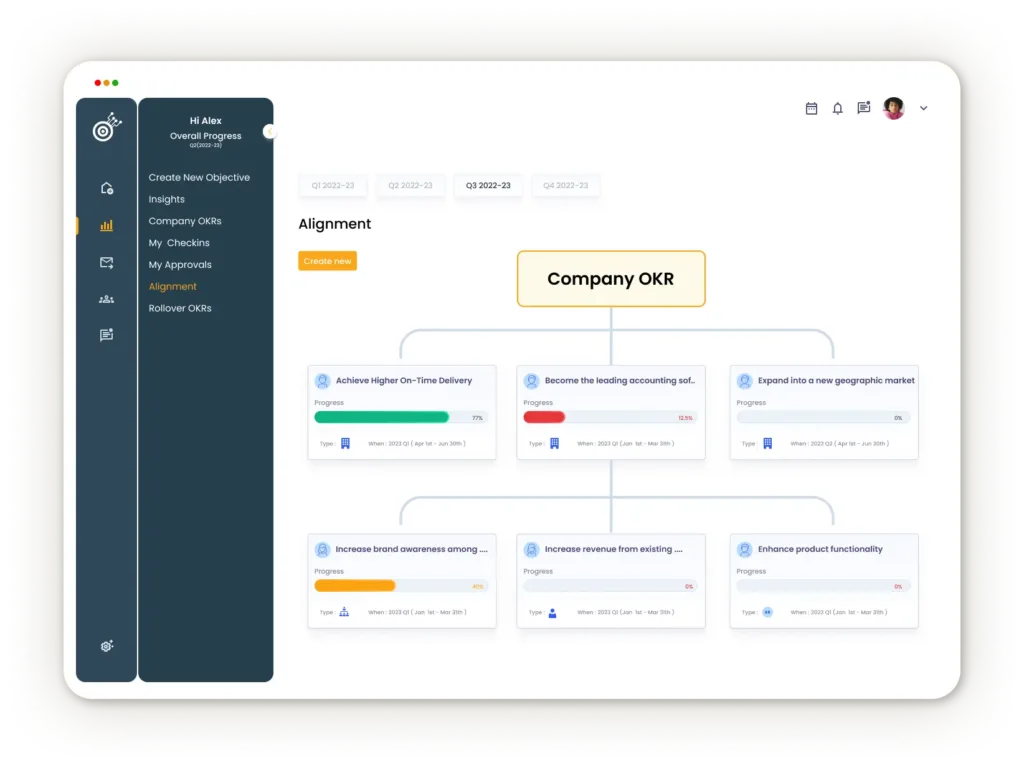
Aligning individual and organizational goals is critical for ensuring that everyone’s efforts contribute to the broader organizational vision. Performance management applications that offer goal alignment mapping capabilities can help organizations visualize and manage this alignment, ensuring that resources are effectively allocated and efforts are focused on the most impactful areas.
10. Automated Reminders and Notifications

Staying on top of performance management tasks and deadlines can be challenging, particularly in the fast-paced finance industry. Applications that offer automated reminders and notifications can help ensure that important milestones, feedback sessions, and goal check-ins are never missed, promoting a culture of accountability and continuous improvement.
The Future of Performance Management in Financial Services
The future of performance management in the finance and insurance industries will be characterized by a shift towards individualized, engaging, and culturally aligned practices. Organizations will need to evolve from traditional, hierarchical approaches to embrace digital, culture-boosting strategies that attract and retain top talent.
Leaders must foster a culture of trust, care, and connection, empowering employees and providing them with the autonomy to shape how and where their work is accomplished. By creating an engaging and inclusive environment, financial services organizations can position themselves as attractive employers for the best talent in the market.
Effective performance management will be critical for understanding, motivating, and developing performance in the modern workplace. To achieve this, organizations will need to adopt robust performance management platforms that offer the necessary features to drive valuable business outcomes while actively engaging employees in their work.
Ultimately, prioritizing people and their development will be the key to driving business success in the finance and insurance sectors. By implementing comprehensive performance management strategies and leveraging the right tools, financial services organizations can cultivate high-performing, engaged teams that consistently deliver exceptional results.
To help you track and manage your financial performance effectively, we have created a Financial Performance Management Template. This template provides a structured framework for setting financial objectives, defining key results, and tracking progress. You can customize the template to align with your specific financial goals and use it to monitor your team’s performance throughout the designated timeframe.
Download the Financial Performance Management Template here
Our Solution: Datalligence’s Financial Performance Management Application
In the dynamic and competitive landscape of the financial services industry, achieving optimal performance is no longer a luxury but a necessity. By selecting the right performance management application and adopting strategic approaches, finance, and insurance organizations can cultivate a high-performance culture that fosters employee engagement, aligns individual and organizational goals, and drives continuous improvement.
At Datalligence, we are committed to providing innovative solutions that empower our clients to navigate the complexities of performance management, enabling them to unlock the full potential of their workforce and achieve sustainable business success.
Contact us today to learn more about how our cutting-edge performance management application can transform your organization’s approach to talent management, and goal alignment. Together, we can unleash the power of peak performance and elevate your finance or insurance organization to new heights of excellence.
FAQs
1. What is financial performance management (FPM)?
Financial performance management involves measuring, analyzing, and improving an organization’s financial results. It encompasses a range of processes, including goal setting, strategy alignment, and continuous monitoring, to help organizations achieve their economic goals and ensure financial stability.
2. What are some examples of FPM software?
Examples of FPM software include Oracle Hyperion, IBM Cognos, SAP Business Planning and Consolidation, Microsoft Dynamics, and Anaplan. These platforms offer various features to support and enhance the FPM process, such as data collection, consolidation, analysis, and reporting
3. How can FPM software integrate customer feedback?
Many FPM applications incorporate customer feedback capabilities, allowing organizations to gather insights from front-line staff interactions. This data helps identify areas for service improvement and training needs, ultimately enhancing the overall customer experience
4. Why is continuous performance tracking important in FPM?
Continuous performance tracking allows managers and employees to monitor progress, adjust goals, and provide real-time feedback throughout the year. This fosters a culture of ongoing improvement and ensures that performance management remains dynamic and responsive to changing business needs
5. What features should I look for in an FPM application?
Key features to consider include goal-setting tools, one-on-one meeting templates, feedback mechanisms, engagement surveys, real-time analytics, performance dashboards, competency assessments, continuous performance tracking, goal alignment mapping, and automated reminders and notifications. These features help align individual and organizational goals, foster continuous improvement, and ensure accountability

